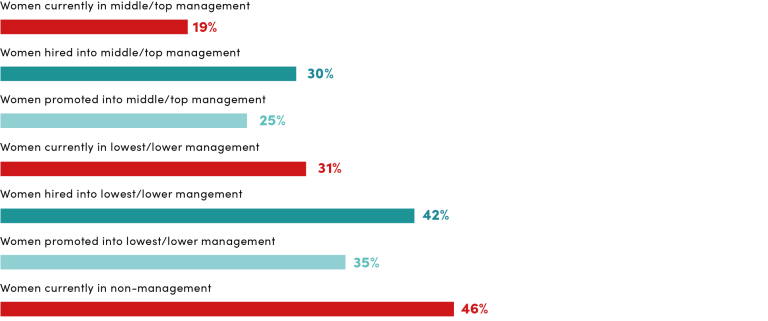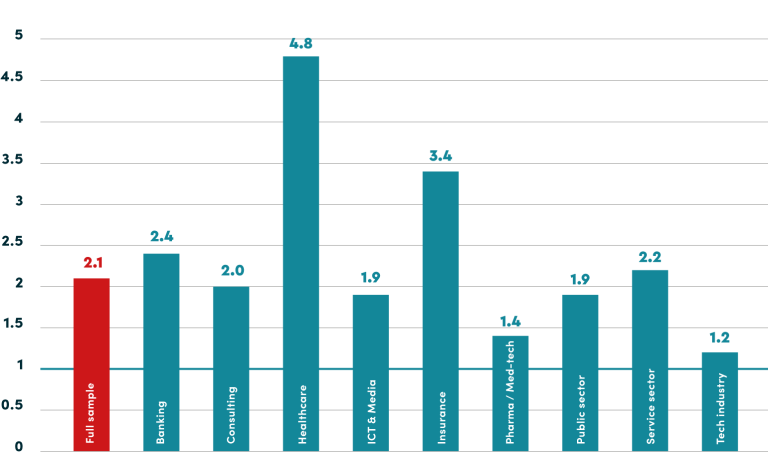In the banking sector, the proportion of women decreases with each higher hierarchy level. Women represent 46% of employees in non-management roles, indicating an almost balanced gender distribution. However, in top management, the share of women drops to just 18% – a decline of 28 percentage points compared to non-management positions. The sharpest decline in female representation occurs between the lowest and lower management positions, where 15 percentage points are lost – indicating a key transition point where women advance at a lower rate than men.
The trend of recent years continues in the banking sector. The proportion of women among new hires and promotions is higher than their current representation in the respective management levels. This means that both recruitment and promotion processes contribute to increasing the share of women in lowest/lower management and middle/top management. Yet, at no level do banks and financial organizations make anywhere near full use of their female talent pipeline, as the share of women being promoted does not reflect the proportion of women in the respective talent pool at the level below.
Interestingly, the share of women is higher in recruitment than in promotions. In lowest/lower management, women account for 42% of new hires – 7 percentage points more than among those promoted. In middle/top management, the share of women in recruitment is 30%, which is 5 percentage points higher than in promotions.

It is evident from the banking industry Glass Ceiling Index of 2.4 that women face significant obstacles to reach middle and top management positions in this sector. It is the third highest GCI of any industry.

In top management, where nearly all women and men work full-time, there are no gender differences in employment percentages. However, this full-time norm in top positions can be a potential disadvantage for women, as women in all lower levels tend to work at lower employment percentages than men. The largest gap appears in lowest management, where women work an average of 87%, compared to 97% for men. The female representation sees its steepest decline at this stage. This means that women are more often required to increase their work percentages than men in order to advance to higher hierarchical levels.